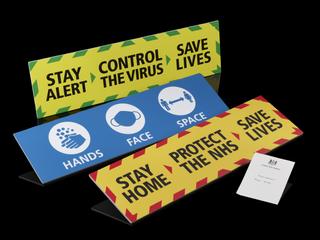
Sign showing hand washing measures at a COVID-19 testing centre








Sign “Have you washed your hands? Catch it, bin it, kill it. Stop the spread of germs” displayed in the laboratory areas at Cambridge COVID-19 Test Centre, based at the Anne McLaren Building on the University of Cambridge Biomedical Campus, April 2020 - April 2021
First launched in 2007, “Catch it, bin it, kill it” is a popular slogan used to prevent the spread of viruses, especially those relating to colds and flu. During the COVID-19 pandemic it was used to encourage people to sneeze or cough into tissues that were then thrown away with regular handwashing either with soap and water or alcohol hand sanitiser.
Delivered in just five weeks rather than the normal six month fit out for a testing laboratory the Cambridge COVID-19 Test Centre tested 3 million samples during its year of operation. 14 robots speeded up the testing rate by six times. The Test Centre was originally a collaboration between the University of Cambridge, AstraZeneca, and GSK, staffed by volunteers from the three sites, many of leaving their studies or roles for a few months, or taking on additional jobs. Volunteers worked in shift patterns in the same role to prevent the spread of COVID-19. In June 2020, the testing centre transition to a directly employed workforce, rather than relying on volunteers. The laboratory was run by Charles River Laboratories with 200 staff.
Details
- Category:
- Public Health & Hygiene
- Object Number:
- 2022-72/4
- Measurements:
-
overall: 297 mm x 210 mm
- type:
- sign




